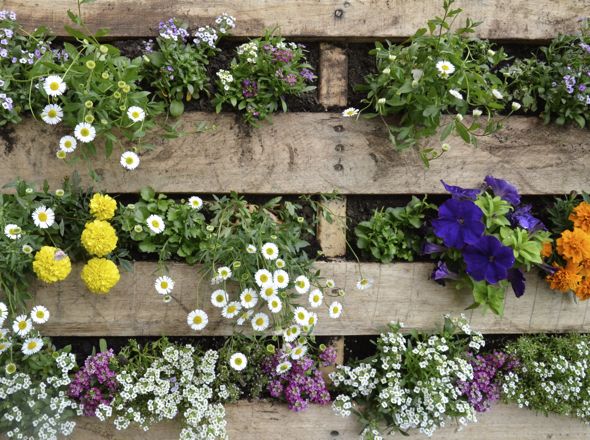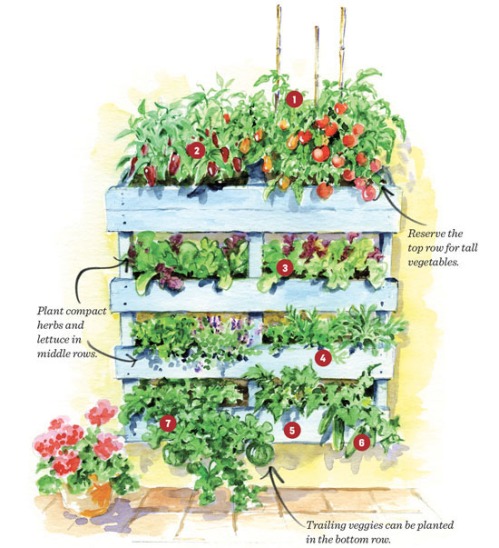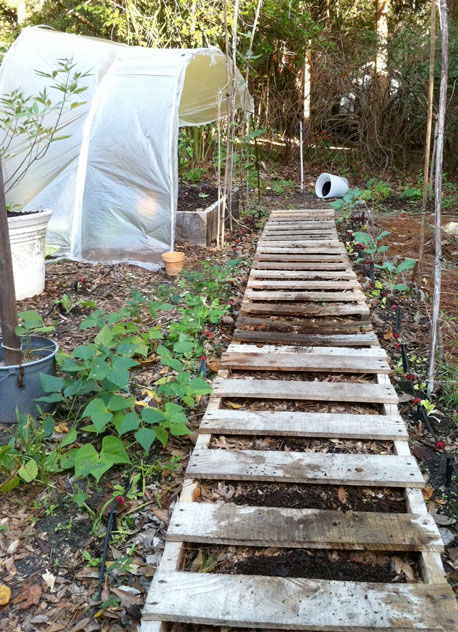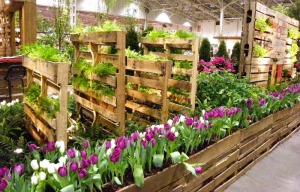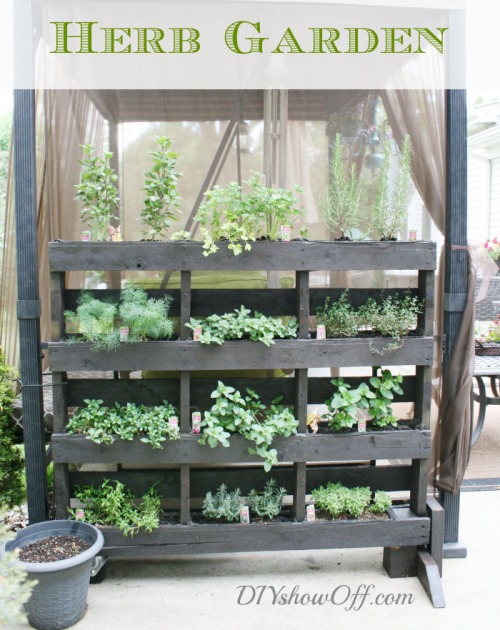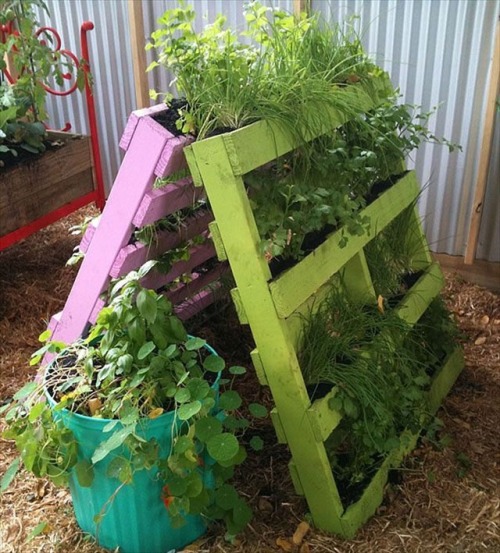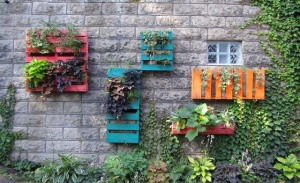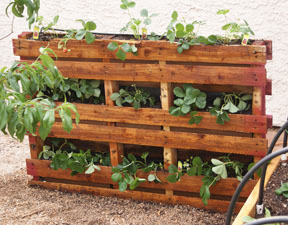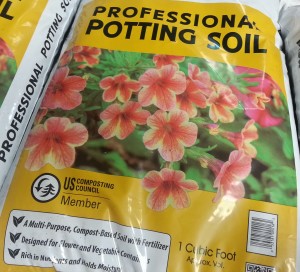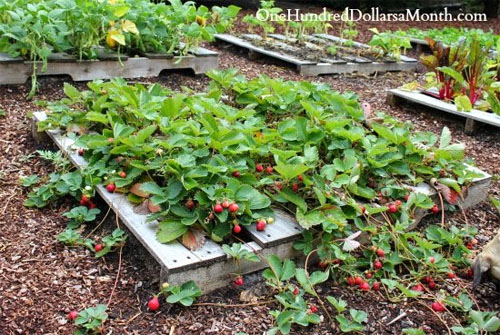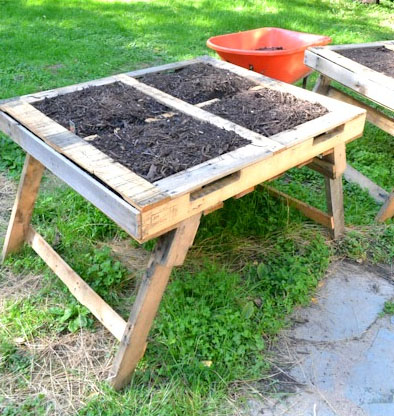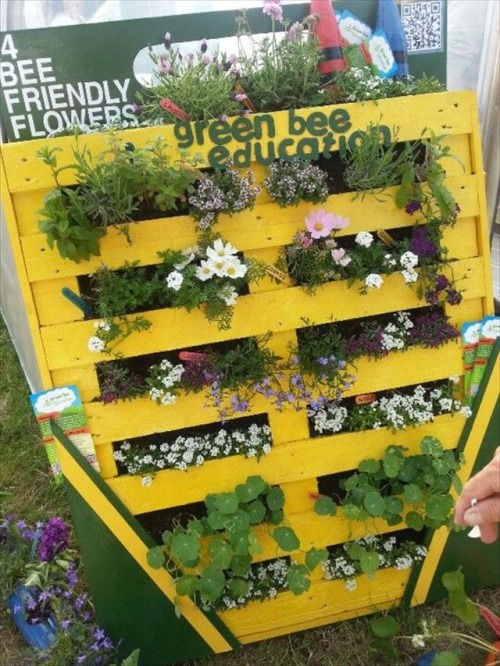Many thanks to gardener Laura Gasparrini who shared her photos and inspired me to write this post!
Smart Gardening! If you are just beginning, or are experienced but have little time, your soil is bad ie hardpan or contaminated, or you don’t have a soil area, just get a bag of compost, garden soil, raised bed & potting mix. Choose the best your budget can afford per the ingredients! Plant roots do best in a mixture of soil and organic matter compared to organic matter alone. Then go for it!
No worries about sorting out your soil, no weeding, no digging! The bags can be different sizes as your design needs. If you already have raised beds, just plop the bags on top. Don’t dig them in! Use that 100% great ‘soil’ in the bags! No digging is good, height is good, less bending that is hard on your back and knees. If you are putting them on the ground, lay down some newspaper or cardboard to stop weeds between your bags. Make a dozen or more drainage holes (screwdriver) in what will be the bottom of your bag, and additional holes around the lower sides in case of heavy rains and your bags flood. As well as drainage, roots of some of the plants will grow through the holes and on into the soil below, but most veggie annuals don’t need more depth than a deep blocky bag of garden soil. Cut out a rectangular area on the top leaving a 2″ border. You’re in biz!
Better than Raised Beds! Raised beds are notorious for being warmer, dry out sooner, then you water and water and the soil is leached of nutrients, the soil is compacted, the soil level significantly lowers, and the plants use it up. With the heavy plastic bags, the soil is intact, more moist, needs less water, more nutrients remain. Why mix good soil that is full of fresh nutrients with depleted soil and deplete the nutrients overall? Often deep raised beds have soil all the way to the bottom of the container. It would take a lot of amending to make all that soil better. As said above, most veggie annual roots don’t need more depth than a blocky deep bag of garden soil!
Amending a whole raise bed is a lot of unneeded labor. In fact, you might need to remove some of the raised bed soil to be able to add enough better soil to make a difference. That’s another reason why so many raised beds fail as the years go on. The soil gets poorer and poorer. What is often unsaid about raised beds is that most gardeners replace all the soil in them every year! That’s a lot of work. With the vibrant nutrition in the bag you will get a sooner, better crop. As I walk my neighborhood with my dog I often see raised beds abandoned in only one year, dry and dead. And there they sit, often for years. Especially sad to see when growing in bags is such a simple solution.
Laura’s bags lasted THREE years! Depending on the condition of your bags, at the end of the season, work what’s left into more permanent beds if you wish, use it as mulch in your landscaping, or simply get more bags when you are ready to plant again!
In summer heat, Mulch your bags after you have planted. Keep them moist, the soil cooler, less watering, save money! The gardener of the images covers them deeply with straw. There are some exceptions — see more!
You can get as many bags as you wish and put them wherever you want, in any configuration! Raised beds can be moved, but it is a lot of work. If you are on a balcony, or don’t want raised beds, you have ultimate flexibility! Put your containers, bags, few or many, just as you wish! If on a balcony, be sure your balcony supports the wet weight, and check with your downstairs neighbor regarding drippings. If you have a lot of space and little time, no inclination or physical ability to dig, this is the ticket to ride! Get out paper and pencil and design your garden. You already have the size of the bags. You could cut little bags out to scale and just move them around until you are happy. Include comfortably spaced planting, tending and harvesting pathways. Summer Design Winter Design
Planting in bags is a form of container gardening. Clearly, you will replace the bags more frequently than containers, especially depending on whether you have desert heat that degrades the plastic or cool coastal moistures. The convenience, of course, is there is no need to consider digging, amending the tired soil in a raised bed, a big container, or repotting! See more at Container Gardening, Garden Anywhere!
Sun is always the important first consideration. 6 – 8 hours is the standard. If your area is big enough but shady, you might put your bags on those flat dollies and move them with the Sun’s path during the day.

That little fencing in the foreground might be to keep raccoons and skunks, kitties and doggies out. Don’t you love the ‘vertebrae’ stones in the back?! Laura Gasparrini photo.
What to plant is up to you with some limitations! There is a huge difference between a mature artichoke plant, 6′ diameter or more, and a head of lettuce, and artichokes have deep roots! Except for container varieties, tomatoes have deep roots. Perennials, plants that grow year after year, like a lot of herbs, have deep roots. But most garden veggies are annuals with 6 to 8″ deep roots. Bush beans and peas and cucumbers can have short 3″ roots, and that’s it. You do have to keep them steadily moist. You can see in the images you can get sixes of some plants in your bags. Others, like zucchini, above right, want a bag of their own!
![]() If you are savvy to Companion Planting, Biodiversity, consider mixing in plants that repel pests and reduce diseases. Mix the type of plants in one bag! Spread them out across your whole garden – two here, two there, and so on. Comingle flowering plants of all seasons to bring and feed pollinators like hummingbirds, bees and feed hoverflies that eat aphids!
If you are savvy to Companion Planting, Biodiversity, consider mixing in plants that repel pests and reduce diseases. Mix the type of plants in one bag! Spread them out across your whole garden – two here, two there, and so on. Comingle flowering plants of all seasons to bring and feed pollinators like hummingbirds, bees and feed hoverflies that eat aphids!

Laura Gasparrini photo.
Your garden design might also allow for in-the-ground plantings of the deep rooted or permanent perennials or like the handsome red stemmed Chard in the image above. It would be a flexible hybrid system that allows the happiness of tomatoes in cages. Remember, vertical gardening, gives you much more available ground space! Cages, trellises and arches get beans, peas, cucumbers, squash vines and indeterminate vining tomatoes off the ground, giving room for more other plants! See Vertical Gardening! If you don’t have that extra room, grow bush beans and peas and determinate, bush tomatoes, container varieties.
 The other option, especially for deep rooted tomatoes, is to put your bag on end! Make drainage holes at the bottom. Push two strong stakes down through the bag a foot deep into the garden to hold the bag upright. One plant per bag. You can choose long stakes so 3 – 4′ are above the top of the bag, then slip a tomato cage in the bag to hold the tomato up. This will work well for less tall determinate tomatoes but not for vining indeterminate tomatoes. Please see some other great instructions at CA Grown! Do what works for you! Terrific image by jaz@octoberfarm
The other option, especially for deep rooted tomatoes, is to put your bag on end! Make drainage holes at the bottom. Push two strong stakes down through the bag a foot deep into the garden to hold the bag upright. One plant per bag. You can choose long stakes so 3 – 4′ are above the top of the bag, then slip a tomato cage in the bag to hold the tomato up. This will work well for less tall determinate tomatoes but not for vining indeterminate tomatoes. Please see some other great instructions at CA Grown! Do what works for you! Terrific image by jaz@octoberfarm
Otherwise, select container tomato varieties that have the shortest roots, least height, are compact. Some of them are amazing little producers and may give you all you need.
However, another option, if you don’t have hardpan or contaminated soil, is to just grow large vining indeterminate tomatoes in your flat bag! Julianne, commenter online, grows them successfully in the larger bags. She cuts a big X across the bottom and the top. The plants get off to a great start with the super medium in the bag! First the roots spread through the entire bag, then, when they discover the X, they grow right on down into your soil! Put a tall enough cage over it that fits over the bag. The cage holds your plant upright, saves space, you have cleaner fruit and more veggies per square foot! Stake the cage securely in place. When your plant gets big, the cage will have a lot to support in a strong wind.
Depending on your overall space, you could use container variety plants to great advantage. Their names often indicate their suitability for container planting: dwarf, patio, tiny, pixie, little, mini, container. There are short carrots like Little Fingers, mini melon vines like Sugar Baby Watermelons with much smaller leaves, small tomato bushes that produce like crazy, bush zucchini, mini eggplant and cucumbers. Many peppers love growing in containers! Some container varieties are bred to produce so much in a small space, gardeners should consider growing them in their non container gardens, replacing varieties with much larger footprints! Since container varieties are smaller in stature, they produce sooner too, even sooner than some early varieties!
What to plant?! Some gardeners plant for the return they get per the plant’s footprint. Others consider the costs. Should you grow inexpensive common veggies like carrots or potatoes? Some veggies are not available at the store or are very expensive. Grow your own from seed! Other gardeners plant for nutrition, plants high in vitamins or antioxidants, for example Garden Purslane. Maybe you choose a plant because it is your sweetie’s favorite or your grandma grew it and it’s a tradition!
How many to plant is sometimes decided by how productive it is, how many fruits you and your family will eat. Zucchini, tomatoes, beans and chard give big returns.
If you have time and love growing from seed, don’t mind extra waterings and tending, plant seeds! Be sure to label them so you will know what to expect – date planted, name, number of days to germination/maturity! If you don’t have that time or inclination, nursery transplants per the season are perfect for you!
Get the right kind of soil bags for your plants that prefer acidic soil – blueberries, cranberries, beans, cucumber, eggplant, parsley, parsnips, pepper, radish, rhubarb, rutabaga, sweet potatoes, and tomatoes. Another site says: Chicory, eggplant, endive, potato, rhubarb, shallot, sorrel, sweet potato. SFGate says ‘Vegetable plants that do best in mildly acidic soil include carrots, cauliflower, celery, cucumbers, garlic, sweet peppers, pumpkins, winter squash and tomatoes. Another site says: Bean, Brussels sprouts, carrot, chive, collard, corn, cucumber, garlic, kale, kohlrabi, mustard, parsley, pea, pepper, pumpkin, radish, rutabaga, squash, sunflower, tomato, turnip, watermelon. Get a soil test kit or use your intuition. You can see there are differences of opinion among the ‘experts!’ Woody mulches help maintain acidic soil pH. Specific info about soil pH for veggies
Before you plant, loosen the ‘soil’ in the bag. If it was in a stack at the nursery it may be quite compressed. Turn it, roll it, shake it, squeeze it, pummel it a bit, work it until the stuff in the bag is loosened. Young roots will find it easier to make their way through it to feed.
Put your bag(s) where they will live; on a dolly if they will be moved. Gardener, Amelia Allonsy, recommends 40 lb bags, and to add 1 cup of 5-10-10 fertilizer for every 2 1/2 cubic feet of potting soil. One 40-pound bag of potting soil is roughly 3/4 cubic foot, so this amount works for approximately three 40-pound bags of potting soil. Your plants will need those high 10-10 counts later to produce blooms and function well. I add a handful of bonemeal in the planting holes of plants that produce by blooms. Plant your plants. Water gently. Some say water first, plant second. Do what you think will be best. Transplanting Tips!
During the season you may want to do some easy amending. Like strawberries love fish emulsion feeds every two weeks. For other veggies, at bloom time there are liquid feeds of fertilizers high in Phosphorus, for more blooms! Your nursery person can help you. These are super easy to apply with your watering can. If you get more into it, see also Veggie Feeding Schedule for Your Summer Favorites!
The one thing you need to do is water frequently. Some do once a day for small plants just starting. In hot weather seedlings may need water three times a day. Water lightly. You don’t want to wash seedlings or soil away, or waterlog and rot your soil. If things get smelly, you need to add more holes and/or water less frequently or more lightly or all of these. Jut like with raised beds, too much watering leaches nutrients away. We want even moisture for most veggies.
One of the most wonderful advantages of growing veg in these bags is there are no soil pests or diseases, no weeds! In short, little maintenance.
Growing in bags in the UK is so popular companies vie for the best planter bags even developing their own special ingredients to please the gardeners! These long 3-Plant Levington bags are at the Cardwell Garden Centre. Bags vary a lot in size; some are 34″ long by 10″ wide. They say: ‘Levington Tomorite Giant Grow Bag is ideal for growing tomato plants and other fruit vegetable and salad crops. This bag is enriched with Tomorite plant food and has added seaweed to give full flavoured tomatoes.’ Just a few other brands are Miracle-Gro, 4 Plant by Evergreen, Incredicrop and Forker and Clover! It’s big business there!

Grow your own terrific veggies, 100% fresh & ORGANIC!
Updated
Love your Mother! Plant bird & bee food! Think grey water! Grow organic! Bless you for being such a wonderful Earth Steward!
The Green Bean Connection started as correspondence for the Santa Barbara CA USA Pilgrim Terrace Community Garden. All three of Santa Barbara’s community gardens are very coastal. During late spring/summer we are often in a fog belt/marine layer most years, locally referred to as the May grays, June glooms and August fogusts. In 2018 they lasted into September and October! Keep that in mind compared to the microclimate niche where your veggie garden is.



